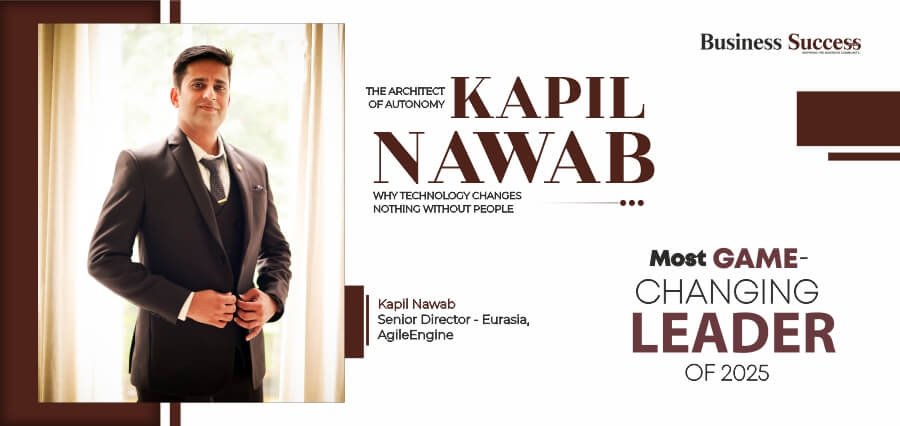Looking Beyond
The industry of the day is marked by record dynamism, tireless pace of change, and limitless appetite for innovation. Not being swayed by rigid architecture or yesterday’s success, the dynamic industry of the day is driven powerfully by the vision of future leaders and their quick response. They are not merely inheritors of legacy systems, but hands-on designers of change, endowed with vision to look beyond change, heart to challenge the status quo, and skill to mobilize diverse constituencies toward new solutions. They bring more than passive management, adding organizational culture, technology adoption, and strategic leadership, positioning them at the core of sustained growth and survival in a turbulent global economy.
One of the strongest means through which future leaders create industry dynamism is through the high importance given to innovation and agility. They are aware that with the age of exponential technology revolution and business disruption, standing still means to perish. These leaders foster a culture of experimentation and possess an employee base that is pushed to take careful risks, learn from setbacks, and constantly strive to innovate. They are early adopters in implementing new technologies as they are convinced of their ability to automate processes, enhance customer experience, or create new markets in the first place. The proactive mechanism of embracing change, in contrast to a back-end response, sets the stage for their businesses and, consequently, influence the industry at large, shattering paradigms and redefining norms. Their ability to envision what is possible creates the energy felt across various industries.
Apart from this, future leaders are also transforming industry dynamics by ensuring evidence-based decision-making and analytics. With data-saturated worlds, the ability to extract useful insights from vast volumes of data is a make-or-break competitive edge. Sophisticated analytical insights can be translated by such leaders into strategy that makes a difference, using more than gut intuition to inform decisions, achieving peak performance, uncovering emerging trends, and reinventing customer relationships. They are investing in analytical software, establishing data literacy across their companies, and creating employees able to decipher complex patterns. This focus on hard facts, as opposed to anecdotal observations, allows for faster and more effective strategic adjustments, enabling their companies to react to shifting markets and consumer desires with unprecedented agility, thus increasing the industry dynamism.
A focus on purpose-driven leadership and stakeholder capitalism. Another characteristic of the way in which future leaders are re-engineering. Business these days, other than shareholder wealth maximization, is done by these leaders with a sense of business. Interdependence with society as a whole. These leaders emphasize values of responsible behaviour, care for the planet, and care for society and see them as essential. Business strategies and not overlays. This values-driven strategy speaks so powerfully to a mass and swelling audience of consumers, employees, and investors who are looking for brands that share their values. Initiating with integrity and social purpose, ‘future leaders’ build a stronger brand and customer loyalty, but also attract top talent and create stronger business models, generating a smarter and more sustainable type of industry dynamism.
Moreover, future leaders are recognized by their capacity to build and enable multi-talented, flexible teams who leverage the power of teamwork. They shed hierarchical, command-and-control, traditional organization styles and master flat organizations with mutual power and cross-functional teaming. They understand that thought diversity creates greater innovation and better problem-solving. They are masters at building inclusive cultures where every voice is heard and psychological safety is the basis of open discussion and constructive argument. They build a culture of collective wisdom and collective ownership. Future leaders realize the full potential of their human capital, unleashing their organizations to be adaptive, innovative, and resilient in solving complicated industry challenges. This enables teams to spearhead sustainable change and make a direct impact on sector dynamism.
Strategic use of technology expertise and digital transformation initiatives is another feature. Future leaders are not distracted by fast-evolving technology; they recognize instead the potential in them as forces for competitive differentiation. They are advocates of end-to-end digital transformation strategies, inspiring the embedding of AI, machine learning, cloud computing, and automation into business models. They are aware that digital expertise is no longer the exclusive provenance of IT functions but must spread throughout the whole company. With investment in digital infrastructure, reskilling their employees, and leveraging technology to drive efficiency and depth of customer, these CEOs keep their companies at industry leading edge, with the rest of industry having to play catch-up and precious dear to its digital life. With resilient and adaptable leaders of the future, resilience and adaptability are required in an uncertainty-driven world to make industry dynamism a reality.
They are temperamentally resilient enough to weather crises, consolidate from mistakes, and change techniques easily. They impart stability and confidence in times of crisis with a firm hand, showing sound leadership and establishing trust with their men. This ability to not only survive but to flourish amidst disruption allows their organizations to emerge stronger through adversity with awesome potential for adaptation that sets them apart. Their adaptive capacity model is transmittable, requiring other sector stakeholders to develop adaptive capacity too, thereby constructing sector overall resilience and dynamism. Last but not least, future leaders are playing an enormous role in the world of business by putting enormous premiums on talent development and succession planning.
They realize that long-term success goes hand in hand with developing the future generation of leaders and fact of the matter experts. They invest big in employee training, mentoring initiatives, and creating well-defined career development tracks. By equipping their people with the skills to learn new ones and assume increased responsibility, they build a steady supply of human capital that can fuel future innovation and strategic action. This future human capital management guards their organizations’ long-term well-being and adds to the industry’s communal intellectual and leadership capital, so it stays vibrant. Generally speaking, the industry today is loudly led by the vibrancy of future leaders.
Their dedication to innovation, data-driven decision-making, goal-based strategy, focus on agile and inclusive teams, comfort with technology, resilience and flexibility embedded in their culture, and passion for talent creation are all synergistically reshaping the competitive landscape. These leaders are not so much surrendering to change, but plotting it, building a culture of perpetual transformation and propelling their respective sectors into an epoch of record growth and breadth of opportunity. Their vision and action are the prime sources of modern industrial dynamism.












